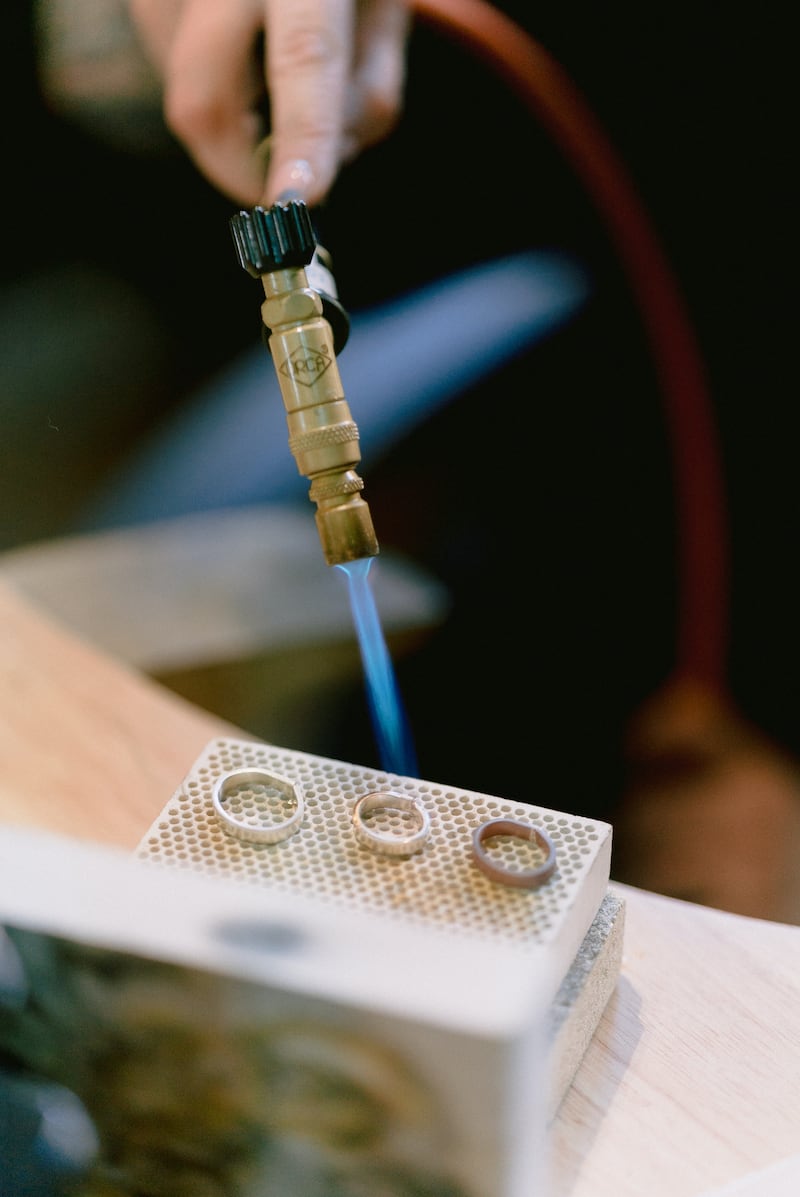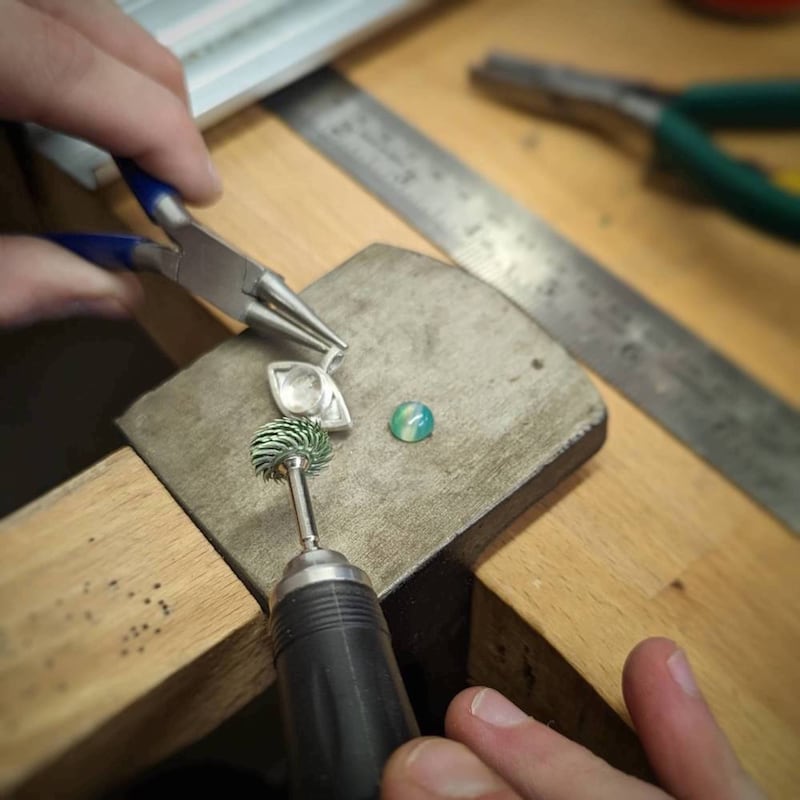You don’t need a king’s ransom to get into silver, as Madeleine Blaine of Silver Works explains.
I do love trinkets and baubles, but don’t I need to be an apprentice to a master craftsman to get started?
Not at all. Blaine, who also has her own jewellery label Gallardo & Blaine Designs got into it when she met a Mexican jeweller while travelling. And yes, Reader – she married him. “The nicest thing,” she says, “is working with your hands, getting deep into your creating and design. You’re transported to a different realm, a happy place. And you make little pieces of art that you can wear, and pass on through the generations.”
All that sounds rather delicious. Can anyone do it?
Yes. “That’s not to say everyone will be amazing, it does take a certain amount of dexterity. You need to enjoy working with your hands, and working with small things.” It also takes time to perfect your goldsmithing skills.

Sorry, goldsmithing? I thought you said silver?
Goldsmithing refers to the techniques, so it covers silver. Silversmithing, according to Blaine, usually describes the making of larger items, such as bowls and candlesticks. And those techniques? They include sawing, soldering, heating, filing, hammering and shaping, finishing and polishing. This means you need a small bench and hand tools including a mallet, pliers, ring mandrel (a tapered tool for shaping) and a micromotor (for finishing and polishing). Or you could go for a shortcut and make a ring out of wax.
RM Block
A wax ring? Doesn’t sound practical.
It wouldn’t be. But wax ring carving is a great way to see if you have the jewellery making bug. Take a lump of Ferris wax, carve, file and shape your ring. Add some finishing touches, and send it off to be cast. Depending on your inspiration, and dedication, it can take a couple of hours, or a couple of days. As casting is a specialist process using big machines, most jewellers will send their pieces off. Blaine mentions Castleyard Ventures in Naas, and Colbar Casting in Tallaght.
Isn’t it horribly expensive?
Actually no. Like everything, the price of silver has gone up, but unless you’re making enormous things, it’s pretty affordable. “You could melt down silver and use it again,” Blaine explains, “but it would need to be tested. The beauty of wax is you can easily correct it. Using as simple a thing as a tea light, you can fix, and file until you are totally happy. Most of the time,” she adds, “you can embrace your mistakes as the beauty of a handmade piece of jewellery.”

So where do I begin?
“Pendants are great. Unless you’re wax-casting, rings need to be formed and soldered together perfectly, and with earrings, you need to make two exactly the same,” Blaine warns. “If you’re drawn to the medium, book a class or get a kit. You’ll soon know if it’s for you. Worst case scenario: you’ve wasted a little bit of time and money. Best? You’ve started on a creative journey and you’ll never look back!”
[ How to weave: Keep it simple and still turn out beautiful workOpens in new window ]
Taster classes in ring and pendant making at Silver Works start at €75. Ring carving kits cost €65, plus €65 for casting, check out silverworks.ie. Want more? The Design and Crafts Council Ireland’s Jewellery and Goldsmithing course is a three year BA programme that has launched a host of international careers. For more information, see dcci.ie.


















